Last January, the Arcola Theatre marked its 11th anniversary by moving into a new home, a former paint works and did what they could with the building to get it open in just a few weeks, but now thanks to an Art Council grant, they are undertaking a refurbishment of the site to make it more suitable for theatrical works.
Such refurbishment give an opportunity to see the building stripped back to its bare bones, and the theatre are holding some tours this week to have a look around the place. The tours can only take place this week as rebuilding to cover up the exposed interior starts shortly.
Although the site worked as a theatre as it was for the general public, it was a bit of a mess behind the scenes, and the rehearsal rooms were totally inadequate. When finished, the new interior will have two staircases, a better bar area, two studios and better rehearsal space.
The current entrance will remain, but there will be a new main entrance around the side.
And the bar inside is looking a little draughty at the moment.
However, the main works of interest are next door beside the main stage. Here, while the room is being cleaned out, and being quite a useful storage area, it is the behind the scenes rooms that are getting the bulk of the building work.
The changing rooms are at a lower level, and have been dug down by about a foot to reveal the brick foundations. Sadly at the moment it smells, as the sewage network is being diverted through temporary pipes above our heads and the joints are probably not sound in the far corner.
When finished, the floors in these lower levels will be raised up again, but two layers of bricks in the foundations will still be visible, giving them about 20cm of more headroom. The revealed bricks should also look quite nice as an architectural feature.
Down here in the slightly labyrinthine basement sits a stunning feature – an early coal-fired boiler. Sadly too decrepit to restore and frankly a bit of a nuisance, so I gather it is to be removed. Honestly, these aren’t that rare, so in historic terms, it’s not a big loss.
The boiler will — subject to funding — be replaced with a wood boiler, and coincidentally on our tour was a local carpenter who has spare wood cuttings in need of disposal. Serendipity at work. In addition, to improve ventilation, air will be drawn in from vents in the pavement outside, which will also double up as a light well.
Currently being exposed, and I hope whatever glass/vent system they come up with leaves these arches exposed as I think they are quite an interesting feature to find underneath a pavement.
This building itself dates from 1868 and was built by the artist supplies company, Reeves & Sons, who moved out in 1948. It’s said that JMW Turner and Constable used to buy their paints from this company.
The theatre is scheduled to reopen on the 1st October 2012, and in the meantime is working in a tent in a nearby plot of land.
Anyone who has seen a construction site knows that it throws up an awful lot of waste, and here, the recent upgrades of the East London Line have proven to be unexpectedly useful. A plot of land opposite the theatre was cleared during the construction of Dalston Junction station, and TfL has loaned it to the theatre to use for storage and recycling of bricks and waste fixtures.
There was a campaign it appears for the plot of land to be turned into a plaza exposing the old Reeves building, but financial constraints mean it will become a block of flats. The financing of the train station was partly dependent on such developments. But in the meantime, it is a useful, and seemingly much-appreciated overflow site.
The train station is also very convenient for the theatre as it’s just around the corner, which could help widen its customer base when it reopens in October.
A few more photos of the interior of the building site are here.
There are few spaces still available on the tours later this week. Email build@arcolatheatre.com with a preference for Wed/Thur or Fri and they might be able to fit you in. Tours start at 4:45. Wear sensible clothes and shoes for a building site.


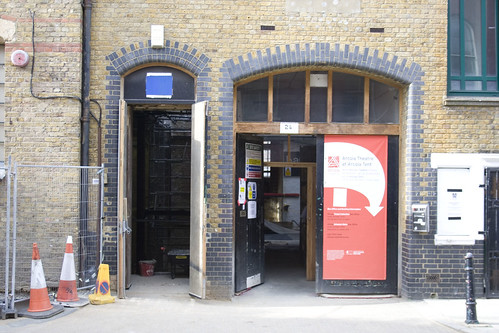
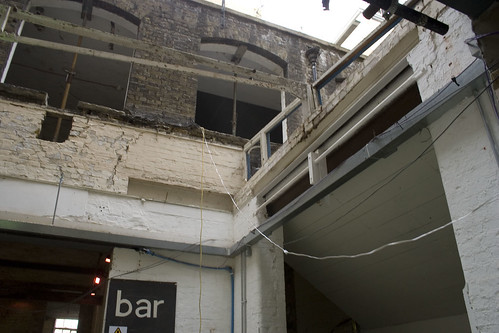
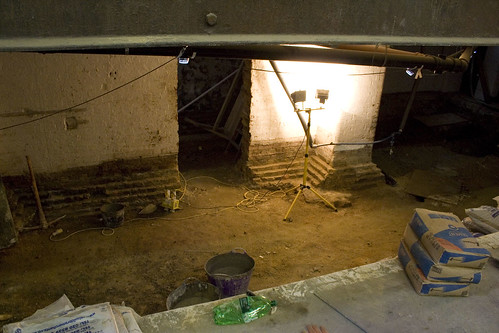
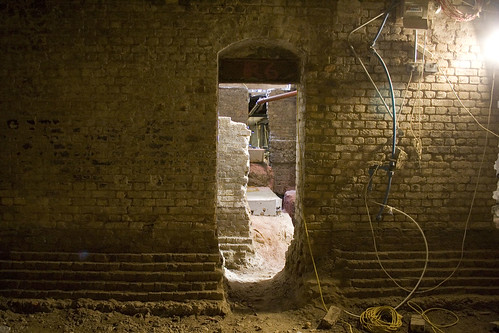
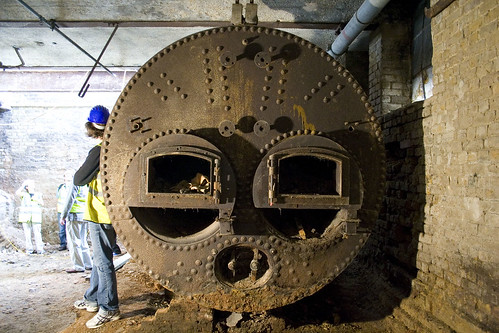
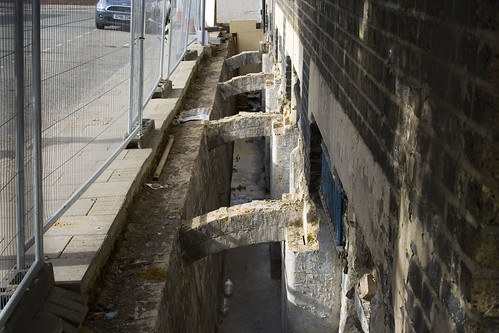
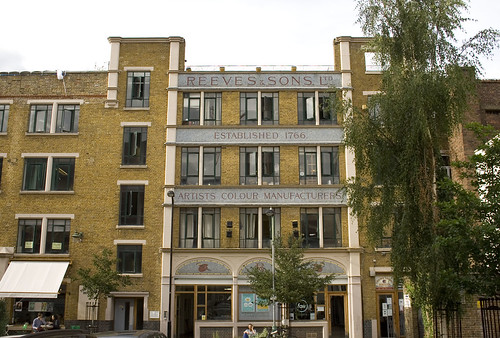






A handsome building from the outside. I liked the old boiler a lot. I agree on the ‘flying buttresses’ – first time I’ve seen such a thing outside a gothic cathedral.
This is hugely informative and very interesting. Had no idea London structures looked so Roman! Great building. I am sure it will become a fabulous theatre once finished. I am glad to say I was in the first season at Arcola, playing Helen Weigel/ Volumnia in Mehmet Ergen’s production of Plebeians Rehearse the Uprising by Gunther Grass. Long time since. Warrants another appearance soon… I hope…;))
The architect of the original building was E H Horne who designed six stations for the North London Railway 1870- 1873 including the impressive Highbury & Islington Station. The builders were Sewell & Son.